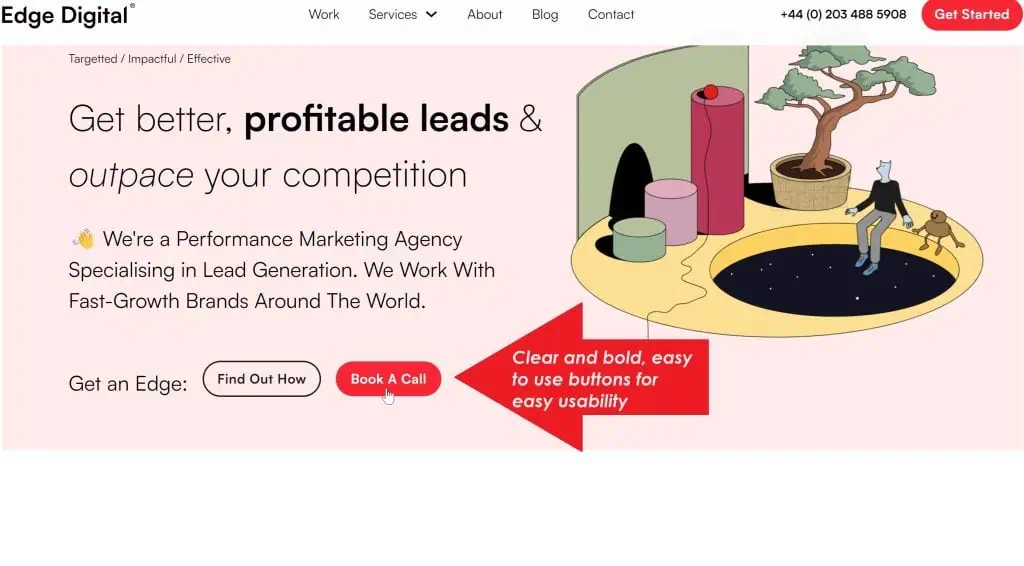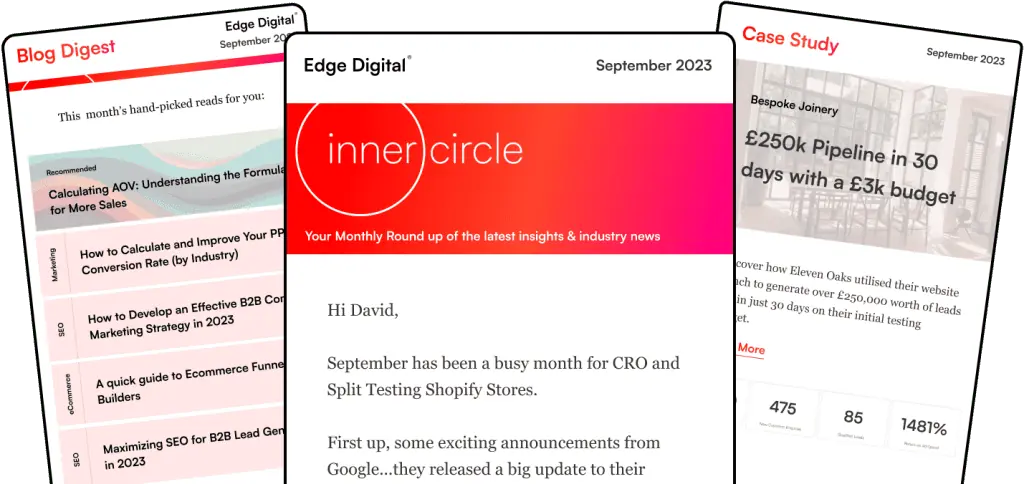With an ever-increasing number of people selling their services or products online, the competition to win new business via an inbound marketing campaign is growing.
As a selling strategy, inbound marketing frequently saves money, leads new customers to your business, and can help to make even a subtle change in business direction a lot easier. However, campaigns often fail, and while this is usually down to really quite simple reasons, it can discourage people from persevering with the technique.
In our 10-Point Checklist for Launching Successful Inbound Marketing Campaigns, we have brought together our most useful pieces of advice, based on experience gained from running multiple campaigns. Being aware of this checklist is crucial to avoid common pitfalls. Read on, and check whether you have missed anything!

Checklists will help you not only keep consistent, but will also help avoid missing key stages
Think about your business goals
Checklists will help you not only keep consistent, but will also help avoid missing key stages.
1. Think About Your Business Goals
Creating an exciting offer that will substantially grow your customer base in a new direction requires some thought into the overall strategy of your business. See this offer as a first step towards the direction you would like to see the business going in five years’ time, and plan accordingly. As well as putting time into making sure the offer will be attractive to new customers, think about the amount of resources (defined in time or money) you are prepared to invest in determining the success of the deal. Various factors should be considered when planning the offer, including market trends, customer needs, and competitive landscape.
2. Are You Aware of What Kind of Customers You Are Trying to Reach?
If there is a specific audience you want to target, first think about the kind of offer that would tempt them most. If children are part of the target audience, their specific needs and preferences should be considered. It is helpful to think about the lifestyle and user habits of the desired customer, in order to make an informed decision on what would be tempting to them. For example, is this a person who would be more attracted to a lower priced product or a free item with every sale?
3. Framing the Offer on Your Website
Once you have decided on the offer that will draw new customers in, spend some time brainstorming different ways to frame the deal on your website. Within your team, test out a variety of landing pages to come up with a version that persuades the visitor to continue with their offer purchase. The challenge of creating effective landing pages can be addressed through trials of copy language and tone, and most importantly – images.
4. Make It as Easy as Possible for the Customer with Support
If the offer looks difficult to access, is poorly communicated, or is hidden on the landing page, then potential customers can easily be dissuaded from continuing to sign over their details. Following proper guidance to ensure the offer is clearly communicated is crucial. There are also some easy search engine optimization techniques, such as adding in certain keywords, which will boost your page to searching customers.

Clean and clear usability for customers is key.
5. Promoting the Offer
Most of the hard work has been done – but now you need to ensure the offer gets enough attention with the right support. The easiest way to do this is to blog about the offer, both on your website and any other sites with which you have associations or direct partnerships. It might sound obvious, but within all the blogs posted on external websites, make sure that you provide direct links to the offer landing page, and always test out the links to ensure that they are not broken. Review the existing content on your own website – can any old posts be quickly updated to include links to the new offer?
6. Share, and Share Widely
Many people hear about offers through links shared by their family and friends or followers on social media. If social media channels have not previously formed part of your online strategy, then it’s definitely time to get connected. You can easily synchronize the posts on your website to automatically publish across different networks, such as Facebook and Twitter. Before you create multiple accounts, however, think about which social media channels your target audience are likely to be using – and concentrate on those. To be successful on social media, do not solely market your offer, but put it in the mix with other content. Make sure you have some analytics tools in place to track how many referrals to your site come in via the new channels, and use this information to work out what types of messages share best.
7. Be Consistent!
While the offer is running, do not post content twenty times one day, only to then have a gap that stretches into the following week. Practice maintaining a regular posting schedule to ensure consistency. Remember that, at any one time, only a fraction of the people you are trying to reach are likely to be online, so schedule your posts or social media content to match the hours when your target customers are probably surfing the net.
8. Do Not Rule Out Paying for Additional Online Promotion
Most of the tips so far on this checklist have required minimal additional financial outlay, but there are options out there if you want to guarantee landing page views. Whether you invest in paid search advertisements that link through to the offer or try promoted content on social media channels, sometimes these more traditionally commercial approaches can save a marketing campaign that is not performing as well as expected. You are not usually locked into paying continuously for these options either, so with even a small budget you can experiment with what works for you. Failure to invest in promotion can lead to campaigns not reaching their full potential.
9. Are Your Inbound Marketing Processes Integrated into a Daily, Weekly, or Monthly Diary?
Choosing an offer and marketing it well is not a difficult task, especially if you are following our 10-Point Checklist! However, in many cases, consistency is key to a successful inbound marketing campaign – and many of these tasks, such as writing a blog post or navigating social media, can be incredibly time-consuming. To make sure that your campaign meets its promotional targets, try making an outline of the shape of your average working week, and identify particular time slots which might work best for different activities. Many people find that first thing in the morning is the time at which they concentrate most, so if this sounds familiar, why not schedule a difficult task for then? If you are working with a team of people, think about how you can delegate various responsibilities across the project lifespan.

social media is one of the main platforms for marketing
10. Have You Created Specific Guidance Materials to Follow Up with Visitors to Your Site?
Hopefully, following the techniques above will bring a lot of new traffic to your website via the offer landing page, but the art of successful inbound marketing is not just about selling the offer. If the offer is targeted at families, it is important to consider the child’s perspective. Remember that the campaign began as a way to create a new customer audience – and think about creating a strategy to turn new visitors into repeat customers. Consider using email marketing to follow up with visitors who have shown interest in your offer. Personalized emails that thank them for their interest, provide additional value, and encourage them to explore more of what you offer can turn a one-time visitor into a loyal customer.
Analyze and Refine Your Strategy
After your campaign has been running for a while, it’s important to take a step back and analyze its performance. Use tools like Google Analytics to track where your traffic is coming from, which pages are performing best, and how visitors are interacting with your site. Are they spending time on your landing pages? Are they bouncing off quickly? This data is invaluable in refining your strategy. In my view, it is crucial to view this data to make informed decisions. Adjust your tactics based on what’s working and what’s not. Maybe your social media posts are driving a lot of traffic, but your landing page isn’t converting. Or perhaps your blog posts are performing well, but your email campaigns need work. Use these insights to continuously improve your inbound marketing efforts.
Keep Up with Trends and Best Practices
Inbound marketing is an ever-evolving field, and it is crucial to stay aware of new developments. What worked a few years ago might not be as effective today. Make it a habit to stay updated with the latest trends, tools, and best practices in inbound marketing. Follow industry blogs, attend webinars, and participate in online communities. This ongoing learning will help you stay ahead of the competition and keep your marketing efforts fresh and effective.
By following this comprehensive 10-point checklist, you can ensure that your inbound marketing campaigns are well-planned, executed, and refined. This approach will not only attract new customers but also help in building long-term relationships with them, ultimately driving sustainable business growth.
Inbound Marketing Q&A
Q1: What is inbound marketing, and how does it differ from traditional marketing?
Inbound marketing is a strategy that focuses on attracting customers through valuable content and experiences tailored to them. If children are part of the target audience, their specific needs and preferences should be considered. Unlike traditional marketing, which often relies on outbound tactics like TV ads, cold calls, and direct mail, inbound marketing leverages online content, social media, and SEO to draw customers in. The goal is to provide helpful information and build trust with potential customers, leading them naturally to your products or services.
Q2: Why do inbound marketing campaigns sometimes fail, and how can I avoid these pitfalls?
Inbound marketing campaigns often fail due to several common reasons, such as lack of clear goals, poor understanding of the target audience, ineffective content, and inconsistent execution. Failure to follow guidance can also lead to unsuccessful campaigns. To avoid these pitfalls, ensure you have a well-defined strategy, know your audience’s needs and preferences, create high-quality content that addresses those needs, and maintain consistency in your efforts. Regularly reviewing and adjusting your strategy based on performance data is also crucial.
Q3: How can I determine the right target audience for my inbound marketing campaign?
Determining the right target audience involves researching and understanding who your ideal customers are. If children are part of the target audience, their specific needs and preferences should be considered. Start by analyzing your current customer base to identify common characteristics such as demographics, interests, and behavior patterns. Use tools like customer surveys, social media insights, and website analytics to gather more information. Creating detailed buyer personas can help you visualize and better understand your target audience, enabling you to tailor your content and marketing efforts effectively.
Q4: What are some effective ways to promote my offer through inbound marketing?
A4: There are several effective ways to promote your offer through inbound marketing, but the challenge of creating effective promotional content cannot be overlooked:
Content Marketing: Create blog posts, articles, and videos that highlight the benefits of your offer and share them on your website and social media channels.
SEO: Optimize your landing pages and content with relevant keywords to improve search engine rankings and attract organic traffic.
Social Media: Use social media platforms to share your offer, engage with your audience, and encourage shares and referrals.
Email Marketing: Send personalized emails to your subscribers, informing them about your offer and providing a clear call-to-action.
Partnerships: Collaborate with influencers, industry blogs, and other businesses to expand your reach and promote your offer to a broader audience.
Q5: How can I measure the success of my inbound marketing campaign?
A5: Measuring the success of your inbound marketing campaign involves tracking key performance indicators (KPIs) that align with your goals. It is crucial to consider all cases when evaluating performance to ensure a comprehensive analysis. Some important KPIs to monitor include:
Website Traffic: Track the number of visitors to your website and landing pages.
Conversion Rate: Measure the percentage of visitors who complete a desired action, such as signing up for an offer or making a purchase.
Lead Generation: Count the number of new leads acquired through your campaign.
Engagement: Monitor social media interactions, comments, shares, and likes to gauge audience engagement.
Return on Investment (ROI): Calculate the revenue generated from your campaign relative to the costs incurred.
Use tools like Google Analytics, social media insights, and email marketing platforms to gather and analyze this data, allowing you to refine your strategy and improve future campaigns.



